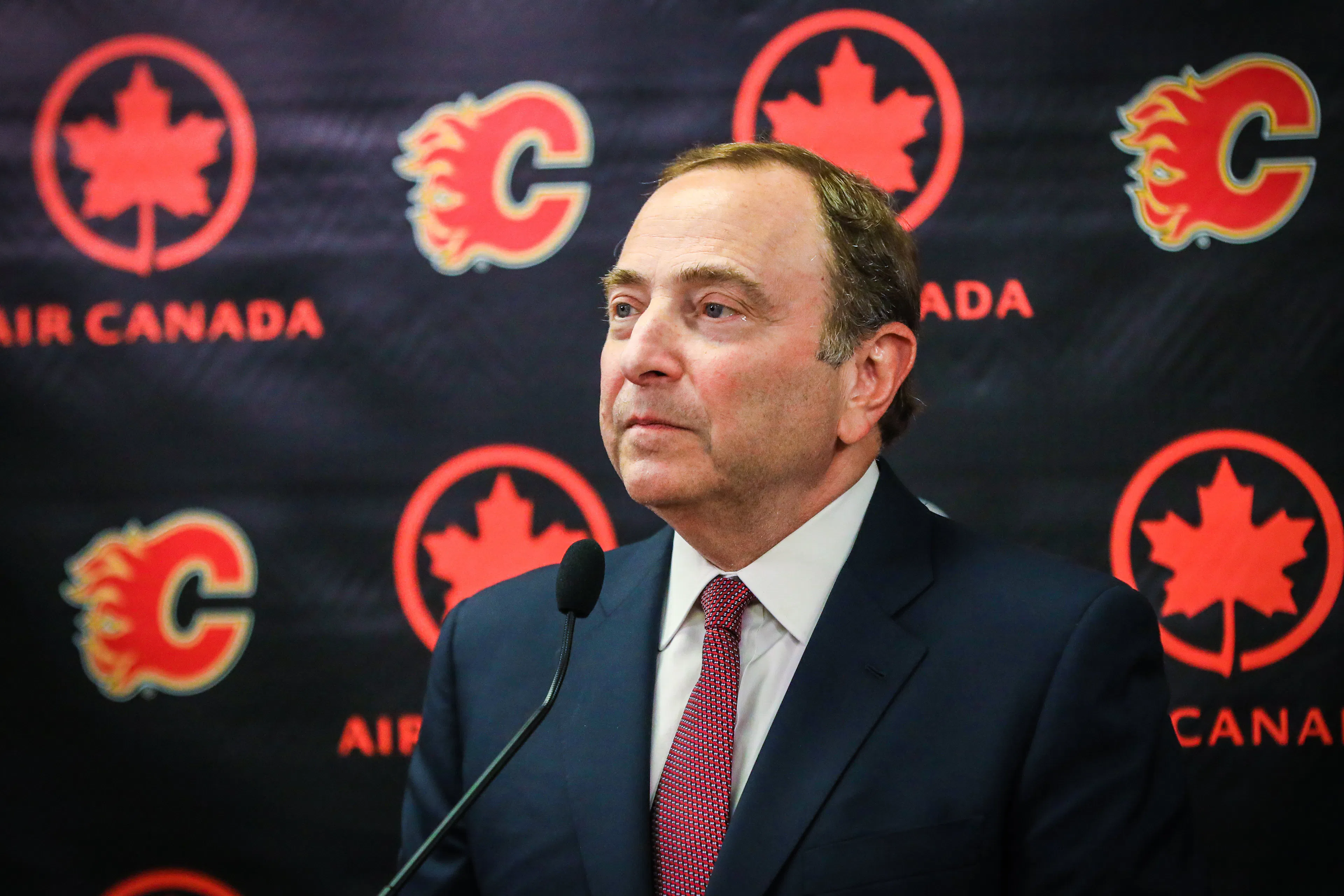Nation Sites
The Nation Network
FlamesNation has no direct affiliation to the Calgary Flames, Calgary Sports and Entertainment, NHL, or NHLPA
Here’s how every NHL arena was funded

Photo credit: Sergei Belski / USA Today Sports
Professional sports can be a very profitable endeavour. But it’s also expensive, particularly because one of the key inputs for having a professional sports franchise is often a building for games to be played in. The old saying is “you’ve gotta spend money to make money,” but when it comes to arenas and stadiums, whose money is being spent?
In light of the never-ending saga of the Calgary Flames and their arena, we dug into the murky corners of Wikipedia to answer a question: Just whose money went into building the 31 current NHL arenas?
A handy table
(Disclaimer: Let’s not lie to ourselves here, every building gets some public money spent on it, even if it’s tax breaks, infrastructure tie-ins or land. When we discuss “Public Money” here, we mean that governmental bodies had to fork over a significant portion of the capital outlay for the building.)
City | Opened | Owner | Public Money? |
Detroit, MI | 2017 | Downtown Development Authority | Yes |
Edmonton, AB | 2016 | City of Edmonton | Yes |
Paradise, NV | 2016 | AEG/MGM | No |
Brooklyn, NY | 2012 | Brooklyn Arena Local Development Corp. | Yes |
Pittsburgh, PA | 2010 | Sports & Exhibition Authority of Pittsburgh and Alleghany County | Yes |
Newark, NJ | 2007 | Newark Housing Authority | Yes |
Winnipeg, MB | 2004 | True North Sports & Entertainment | No |
Glendale, AZ | 2003 | City of Glendale | Yes |
Dallas, TX | 2001 | City of Dallas | Yes |
Columbus, OH | 2000 | Nationwide Insurance/Dispatch Publishing Group (originally) | No |
St. Paul, MN | 2000 | City of St. Paul | Yes |
Toronto, ON | 1999 | Maple Leaf Sports and Entertainment | No |
Denver, CO | 1999 | Kroenke Sports and Entertainment | No |
Raleigh, NC | 1999 | Centennial Authority | Yes |
Los Angeles, CA | 1999 | LA Arena Company (AEG) | No |
Sunrise, FL | 1998 | Broward County | Yes |
Washington, DC | 1997 | Monumental Sports and Entertainment | No |
Tampa, FL | 1996 | Tampa Sports Authority | Yes |
Montreal, QC | 1996 | Molson family | No |
Nashville, TN | 1996 | Sports Authority of Nashville and Davidson County | Yes |
Ottawa, ON | 1996 | Capital Sports Properties | No |
Buffalo, NY | 1996 | Erie County | Yes |
Philadelphia, PA | 1996 | Comcast Spectacor | No |
Vancouver, BC | 1995 | Canucks Sports and Entertainment | No |
Boston, MA | 1995 | Delaware North | No |
St. Louis, MO | 1994 | City of St. Louis | Yes |
Chicago, IL | 1994 | United Center Joint Venture | No |
Anaheim, CA | 1993 | City of Anaheim | Yes |
San Jose, CA | 1993 | City of San Jose | Yes |
Calgary, AB | 1983 | City of Calgary | Yes |
New York, NY | 1968 | Madison Square Garden Company | No |
Let’s break this down a bit…
Primarily privately funded buildings
Teams built their own buildings primarily out of their own pockets in every Canadian market (except for Calgary and Edmonton) as well as the major American markets (plus Vegas and Columbus).
Public money tied to expansion/relocation
Teams received significant public contributions to bring an NHL team to town in Calgary, San Jose, Anaheim, Nashville, Tampa, Minnesota and Carolina. (In Calgary’s case, the Olympic discussions also played a big part, but it’s unlikely they would’ve built an arena only for the Olympics without an NHL club.)
They were worried team would leave
Public funds were provided to contribute to new arenas for St. Louis, Buffalo and Glendale, in part due to concerns that the teams would leave town without a new home. (The Blues had almost moved to Saskatoon in 1983 and the Kiel Center’s construction, combined with new local ownership, helped cement the team’s roots.)
The buildings were meant to revitalize downtown
Four cities with concerns about how sketchy their downtown areas were sunk considerable public funds into shiny arenas to spur development: Detroit, Edmonton, Brooklyn and Newark.
None of the above
Dallas seems to be the exception to the rule. The Stars played for a few seasons in Dallas before they and the Mavericks started chatting about a new arena. The new arena was roughly a mile or so away from Reunion Arena, and essentially moved to a different part of downtown. Public funds went into the building, but the situation doesn’t fit the usual template.
Breaking News
- Instant Reaction: Flames overwhelm Vegas early, hold on for win
- The Flames acquired Jarome Iginla 30 years ago this week
- Flames trade rumours: asking price for Rasmus Andersson last season was a first and a ‘good prospect’
- Flames Game Day 36: A visit from the Golden Knights (8pm MT, SN/CBC/City)
- The Flames have made some progress in 2025-26, despite some tough results
